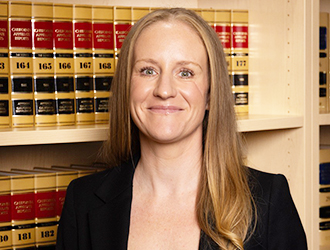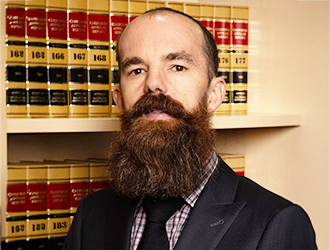California Motorcycle Accident Lawyers
California’s roads present unique risks, and the legal battle that follows a crash can be just as treacherous. We have spent 50 years protecting riders' rights and securing maximum compensation for life-changing injuries.
Local Accident Data
View crash statistics, dangerous intersections, and hospital resources for your specific city in the East Bay.
Select Your City →Rider Law Library
Get clarity on California's specific laws regarding Lane Splitting (AB 51), Helmet Defense, and Insurance.
Read the Guides →Meet the Attorneys
Ready to fight? Meet the legal team that has recovered over $1 Billion for California injury victims.
Get Representation →Our Northern California Service Area
We provide expert legal representation across the entire region, stretching from the Central Valley (Merced, Modesto) all the way north to Redding and the Shasta Cascade region.
- Concord Office
- Oakland Office
- Sacramento Office
Riding in California: The Reality
California is home to the most riders of any state. But with great popularity comes significant risk. Here is what the data says about riding in the Golden State.
The "Vulnerability Gap"
According to NHTSA data, motorcyclists are drastically more vulnerable per mile traveled than passenger vehicle occupants.
"This amounts to a massive overrepresentation of motorcycle drivers in fatality statistics. It is essential for bikers to be extra cautious."
The Rider Knowledge Base
Dive deeper into the complex legal issues specific to motorcycle accidents in California.
Establishing Fault: A Comprehensive Guide
A deep dive into accident reconstruction, evidence preservation, and proving negligence against biased insurance adjusters.
Read Guide →Motorcycles in Multi-Vehicle Accidents
Special legal considerations when multiple drivers are involved, and how to allocate liability across complex chain reactions.
Read Guide →Valuing a Motorcycle Accident Claim
Learn how pain and suffering, lost earning potential, and future medical costs are calculated to determine your final settlement demand.
Read Guide →Fatal Accidents & Wrongful Death Claims
A compassionate guide to the legal steps for surviving family members seeking compensation after the loss of a loved one.
Read Guide →The Role of an Attorney in California
Why legal representation is critical from day one to counter insurance company tactics and maximize your recovery.
Read Guide →The Unique Challenges We Face
A look at the specific legal difficulties—from jury bias to complex vehicle code interpretation—that only specialists can overcome.
Read Guide →Real Riders. Real Results.
We don't use actors. We fight for real people facing the toughest recovery of their lives. Here is what our clients say about the Scranton Law Firm difference.
"They are truly the most trustworthy, professional, and hardworking lawyers that I have dealt with. They fought for every penny and kept me informed the entire way."
"I was overwhelmed by the insurance adjusters calling me after my accident. Scranton Law Firm took over everything immediately. I could finally breathe and focus on healing."
"Professional from start to finish. They knew exactly how to handle the medical billing issues I was facing. Highly recommend to anyone injured in the East Bay."
The Anatomy of a Motorcycle Accident
Beyond driver error, specific collision mechanics lead to catastrophic injuries for riders. Our investigation focuses on proving the dynamics of these critical impact zones.
Left-Turn Violations (Head-On)
The leading cause of fatal motorcycle accidents. A driver turns left directly into the path of an oncoming rider, often claiming they "never saw them."
Unsafe & Reckless Speed
Excessive speed reduces reaction time and increases the severity of impact. We combat insurance claims that routinely try to blame the rider for the speed of the motorcycle.
Unsafe Lane Changes (Blind Spot)
A driver merges without checking their large side-mirror blind spot, pushing the motorcyclist off the road or initiating a high-speed swipe.
Distracted Driving
Drivers texting, watching videos, or reading GPS are unable to see the small profile of a motorcycle. These crashes often involve a complete failure to brake.
Driving Under The Influence (DUI)
DUI cases are criminal negligence. We aggressively pursue punitive damages against drunk drivers to maximize client compensation and penalize reckless behavior.
Road Hazards & Surfaces
Potholes, road debris, and unsafe road surfaces are far more hazardous to a two-wheeled vehicle, often leading to government liability claims (Caltrans).
Find Out If You Have A Case.
For Free!
We Handle Catastrophic Injury Cases
Motorcycle accidents often result in life-altering trauma. Our team works with top medical experts to calculate the lifetime cost of your care, ensuring your settlement covers you for decades, not just days.
Traumatic Brain Injury (TBI)
From concussions to severe cognitive impairment. We fight for compensation that covers long-term rehabilitation, neurology costs, and lost cognitive function.
Spinal Cord Injuries
Paralysis, herniated discs, and nerve damage require expensive lifetime care. We factor in home modifications, assistive devices, and future surgeries.
Severe Road Rash & Burns
Often minimized by insurers, "road rash" can require painful skin grafts and leave permanent disfigurement. We demand payment for scarring and pain and suffering.
Complex Fractures
Biker impacts often shatter bones in the legs, arms, and ribs. We account for orthopedic surgeries, hardware implants, and the risk of future arthritis.
Fatal Motorcycle Accidents & Wrongful Death Claims
At Scranton Law Firm, we understand that losing a loved one in a motorcycle accident is an overwhelming and heart-wrenching experience. No amount of money can replace a family member, but financial stability is often critical for those left behind.
We Handle These Cases with Compassion
Our legal team provides unwavering support during this difficult time. We pursue justice to ensure those responsible are held accountable. A wrongful death claim can recover compensation for funeral costs, loss of future income, and loss of companionship.
Allow us to handle the legal burden while you focus on your family.
Let's make sure you get the compensation you deserve
Don't wait—contact Scranton Law Firm now if you've been injured and need assistance. We fight for your rights, work tirelessly to get you the compensation you deserve, and support you through every step of the legal process. We're here to help you get back on your feet. Filling out this form is your first step toward receiving the help you need. Reach out to Scranton Law Firm, and let's take this important step together.
The 5-Stage California Injury Claim Process
The legal system can be complex, especially while recovering from a serious injury. Here is a clear, step-by-step look at the process you can expect when pursuing compensation.
1. Post-Accident & Maximum Medical Improvement (MMI)
Your initial focus is healing. We advise you immediately on dealing with insurance and collecting evidence. We do not officially pursue your case until you reach MMI—meaning your condition has stabilized and all injuries (including "hidden" ones) are established. Rushing this stage often results in a considerably lower settlement.
2. Claim Investigation & Valuation
After MMI, your lawyer reviews all documentation (medical records, chiropractic bills, indirect costs like childcare/rentals). We interview you and gather evidence (CCTV, helmet cam footage) to build an accurate picture of your financial and mental suffering. This process ensures **all expenses** are recorded.
3. Negotiations & Settlement Demand
We contact the defendant's insurance company with a formal **demand package**. In most cases, we achieve a fair **out-of-court settlement**. If negotiations stall, we file a lawsuit, which must be done before the California 24-month Statute of Limitations expires.
4. Personal Injury Lawsuit (Discovery)
The lawsuit initiates the discovery stage (6-12 months), where information is exchanged. The defendant's team will use this time to assess your degree of fault (comparative negligence, helmet use). Your legal representative will manage depositions, question events, and protect your version of events.
5. Trial
The majority of cases avoid trial. However, if the insurance company refuses a fair settlement, we proceed to court. Trials are fluid and can be delayed, sometimes lasting weeks. Your lawsuit ends once a jury or judicial decision has been made.
California Rider FAQ
Expert answers to the most complex questions about motorcycle law, liability, and insurance tactics.
How much is my motorcycle accident case worth? +
Can I still sue if I was lane splitting? +
Does California have "No-Fault" motorcycle insurance? +
Can I get compensation if I wasn't wearing a helmet? +
What if I was hit by a drunk driver? +
What if it was a hit-and-run accident? +
How important is helmet cam or dash cam footage? +
Why do motorcycle claims take longer than car accidents? +
Can my passenger also file a claim? +
How much does it cost to hire a motorcycle lawyer? +
Don't see your question? Call (800) 400-8742 for a free, no-obligation consultation.
Find Out If You Have A Case.
For Free!
Don't Let the Insurance Company Undervalue Your Ride.
The clock is already ticking on your claim. Antioch riders have relied on our 50+ years of experience to secure the maximum compensation for their injuries. We don't get paid unless we win your case.
Start My Free Case Evaluation





